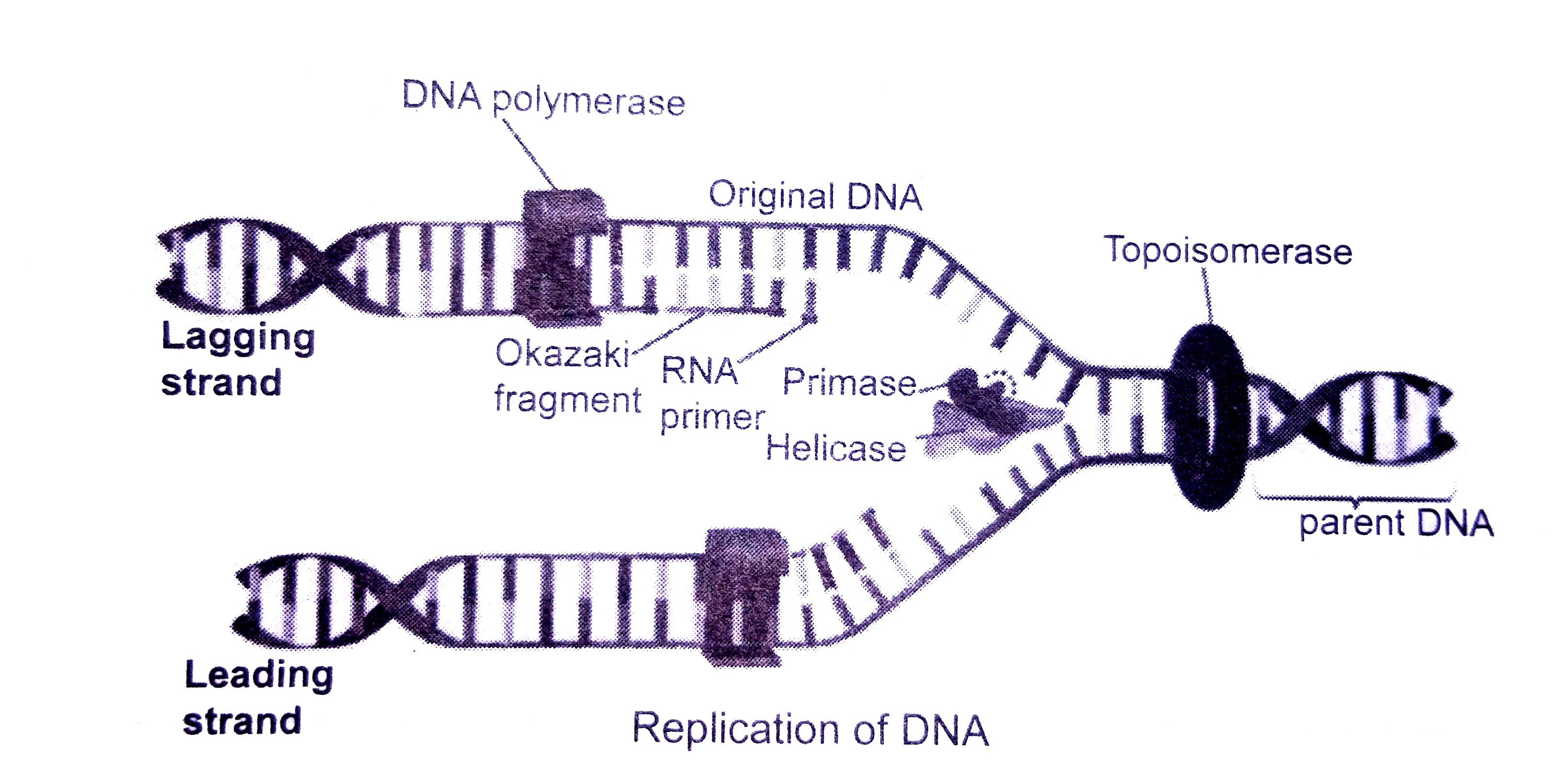Explain the detail, the various steps of DNA replication. Solution in Tamil
Replication of DNA:
Replication of DNA, occurs within a cell. DNA molecule produces exact copies of it.s own structure during replication.
The two strands of a DNA molecule have complementary base pairs, the nucleotides of each strand, provide the information needed to produce its new strand.
The two resulting daughter cells, contain exactly the same genetic information as the parent cell.

DNA replication involves the following steps:
(a) Origin of replication:
The points on the DNA, where replication begins, is the site of origin of replication. The two strands open and separate at this point, forming the replication fork.
(b) Unwinding of DNA molecule:
The enzyme, helicase, bind to the origin of replication site. Helicase, separates the two strands of DNA. The enzyme called topoisomerase, separates the double helix above the replication fork and removes the twists formed during the unwinding process.
(c ) Formation of RNA primer:
An RNA primer is a short segment of RNA nucleotides. The primer is synthesized by the DNA template, close to the origin of replication site.
(d) Synthesis of new complementary strand from the parent strand:
After the formation of RNA primer, nucleotides are added with the help of an enzyme DNA polymerase, a new complementary strand of DNA is formed from each of the parent strand.
The daughter strand is synthesized as a continuous strand, which is called leading strand.
The short segments of DNA are synthesized, in the other strand and called lagging strand. The short segments of DNA are called Okazaki fragments. The enzyme DNA ligase, joins the fragments. The replication fork of the two sides meet at a site called terminus, which is stimulated opposite to origin of replication site.
Topper's Solved these Questions
- HEREDITYBOOK - FULL MARKSCHAPTER - HEREDITYEXERCISE - ADDITIONAL QUESTIONS (HOTS)
2 Videos
- HEREDITYBOOK - FULL MARKSCHAPTER - HEREDITYEXERCISE - ADDITIONAL QUESTIONS (ANSWER THE FOLLOWING BRIEFLY:)
7 Videos
- HEALTH AND DISEASES BOOK - FULL MARKSCHAPTER - HEALTH AND DISEASES EXERCISE - Additional Questions (Higher Order Thinking Skills (HOTS):)
1 Videos
- NERVOUS SYSTEMBOOK - FULL MARKSCHAPTER - NERVOUS SYSTEMEXERCISE - VII. ADDITIONAL QUESTIONS (HOTS).
5 Videos
Similar Questions
What do you understand about DNA, gene and chromosome in short?
View SolutionWhat are chromosomes made up of?
View SolutionWhat does the following symbols represent?

View SolutionGive two examples for conditional reflexion.
View SolutionExplain semiconservative mode of DNA replication.
View SolutionExplain semiconservative mode of DNA replication.
View SolutionExplain in detail the various types of errors.
View SolutionExplain the process of DNA replication in eukaryotes.
View Solutionमेण्डल के प्रभाविता के नियम को सउदाहरण समझाइये । मेण्डल के वंशगति के नियमों के कोई दो महत्व लीखिए ।
View SolutionExplain the process of DNA replication in eukaryotes.
View SolutionExplain Replication in DNA
View SolutionExplain in detail the various types of errors.
View SolutionExplain in detail the various types of errors.
View SolutionDefine replication and explain various steps of DNA replication.
View SolutionDescribe semiconservative replication of DNA step by step.
View Solution
